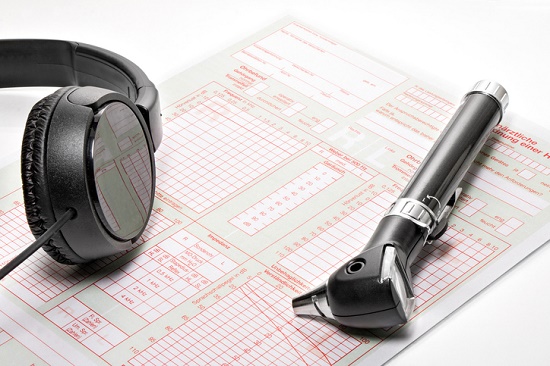
The hearing exam honestly is the easy part. The difficult part is accepting your hearing loss and actually setting up the hearing test in the first place.
You’ve more than likely heard the stats by now: 48 million people in the United States have hearing loss but only a minor fraction actually do anything about it, and only 20 percent of those who could benefit from hearing aids actually utilize them.
So if you’ve already scheduled your hearing test, great job, you’ve already overcome the greatest barrier to better hearing.
The hearing exam, as you’ll discover, is an easy, non-invasive procedure that will establish the severity of your hearing loss to help establish the most appropriate method of treatment.
After you initially arrive at the office, you’ll start by completing some paperwork. Then, you’ll consult with your hearing care professional to talk about your hearing health history.
Your Hearing Health History
Your hearing loss, if existing, can be a result of direct exposure to loud noise, the normal aging process, or by an underlying ailment. You’ll want to rule out any underlying conditions before proceeding to the actual hearing exam.
If you have an earwax impaction, for instance, you may very well be hearing better within a few minutes shortly after a professional cleaning. The existence of any other ailments will be evaluated and the appropriate referral made, if required.
After reviewing your general medical history, you’ll review your subjection to loud sounds, your hearing loss symptoms, and what you desire to accomplish with better hearing.
It’s critical to determine potential causes, how symptoms are affecting your life, and how better hearing will enhance your life, which is all things considered the whole point. Be leery of the practitioner that doesn’t appear to really care about the reasons why you want to improve your hearing in the first place.
Testing Your Hearing
There’s one additional step before starting the hearing test: the visual investigation of the ear with an instrument known as an otoscope. This will help in ruling out any problems with the ear canal, the eardrum, or the elevated buildup of earwax.
Next, you’ll be escorted to a sound-treated room with your hearing care professional. You’ll be required to put on headphones, and the specialist will start to play you some sounds.
You’ll be presented with a variety of sounds at multiple frequencies, and you’ll be asked to identify the quietest sounds you can hear at each frequency. This is referred to as your hearing threshold, and the hearing care professional will log these values on a graph known as an audiogram.
The hearing exam will probably also entail speech testing, where you’ll be asked to repeat the words delivered to you. Assorted types of words, presented at various volumes with and without background noise, will be introduced. This will help confirm if hearing aids can help you with speech understanding.
When the hearing test is finished, your hearing care professional will review the results with you.
Assessing Your Hearing Test Results
Referencing your audiogram, your hearing care professional will now review your hearing in both ears. Based upon the results, your hearing will be classified as normal or as displaying mild, moderate, severe, or profound hearing loss.
If a hearing loss is found, the next step is talking about your treatment options. Considering that there are no existing medical or surgical treatments to repair hearing damage, this means examining your hearing aid options.
Today’s hearing aids are available in a wide range of shapes, sizes, and colors, at a variety of price ranges with a number of sophisticated features. In picking out your hearing aids, it’s essential to work with a competent hearing care professional for three main reasons:
- They can help you identify the ideal hearing aid model to satisfy all of your objectives.
- They can help you determine the advanced functions you need—as well as with the ones you don’t—at a price tag that accommodates your budget.
- They can program your new hearing aids to enhance only the sounds you have difficulty hearing—identified by the hearing test—ensuring the best possible sound quality.
And that’s it, a quick, easy process in exchange for a lifetime of healthier hearing. We’d say that’s a pretty good deal.
We look forward to seeing you!